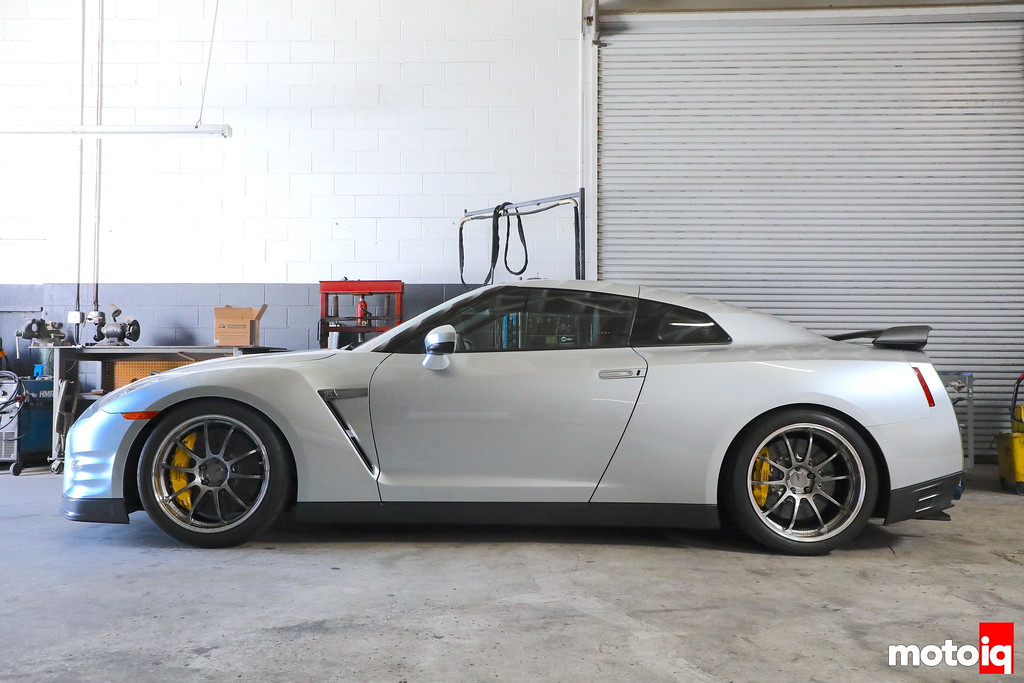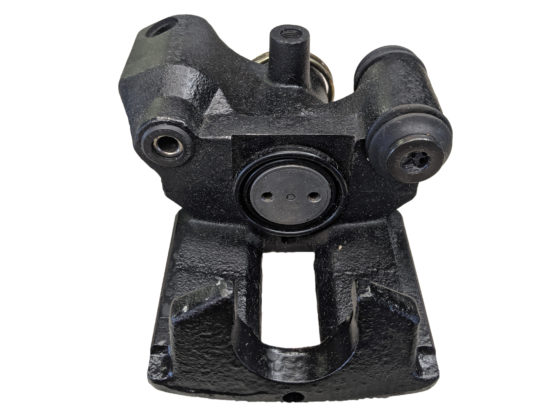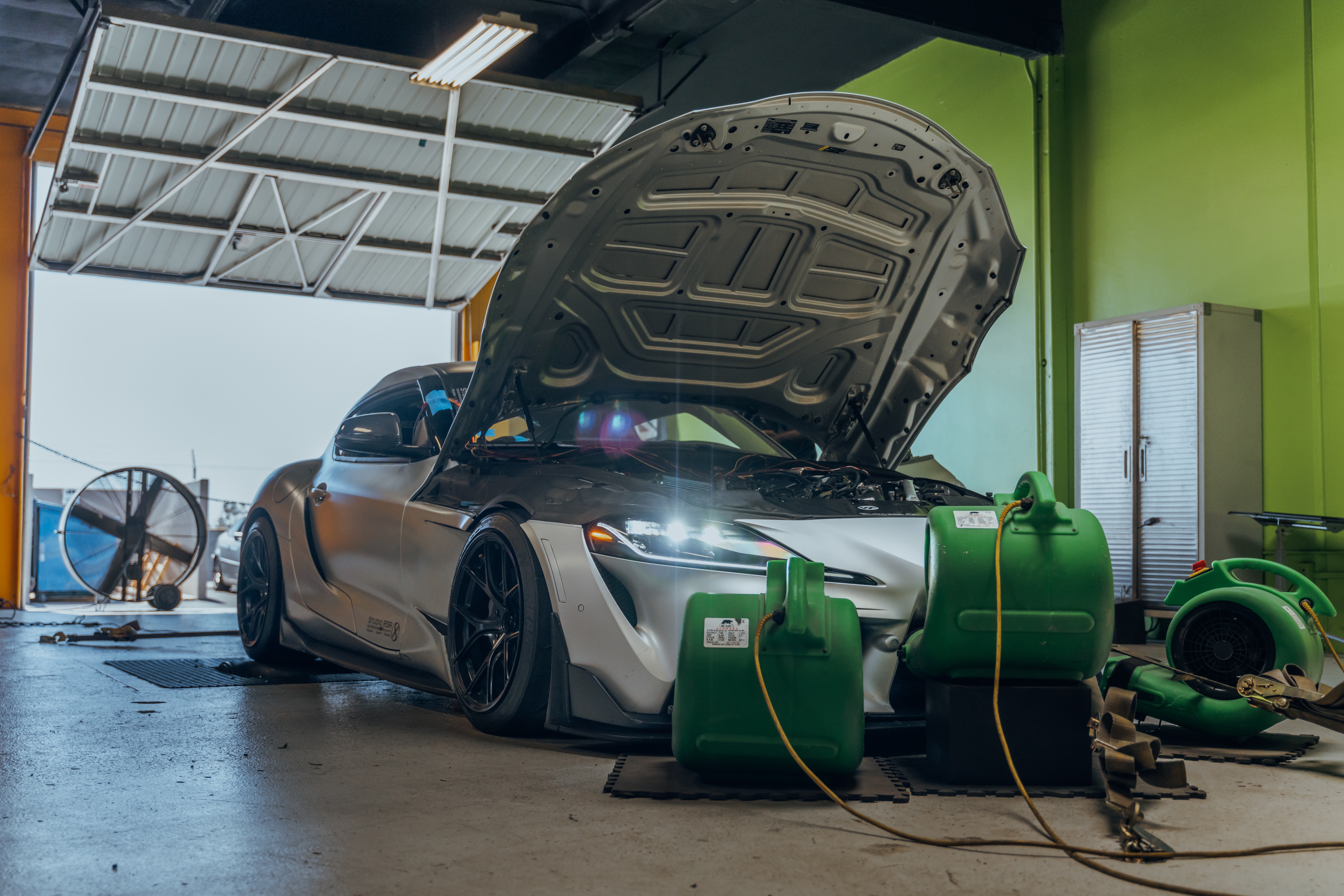
You can see the parking brake drum here. You can also see how wide the friction surface of the CCM rotor is.

You can see some of the wear on the brake drum as these are used brakes, but you can see that the braking surface of the rotors is only slightly burnished in however many miles these rotors had on them before we got them. On the street, CCM rotors hardly wear at all! The way wear on the rotors is determined is pretty unusual. CCM rotors don’t wear in the usual sense as they don’t get thinner in use. In hard use like on the track, the carbon in the rotors starts to oxidize and the rotor gets lighter. So the minimum weight of the rotor is laser etched on the hats. If the rotors get too light, the friction rings need to be replaced. There is also a service that can recarbonize old CCM rotors for a way lower price than replacing them.

The CCM brake rotors need new calipers to work with their greater width and diameter. Nissan upgraded the calipers to Brembo monoblocks for additional stiffness.

Monoblock calipers are forged from one solid piece of aluminum, unlike the base stock calipers that are bolted together from two pieces. This lends itself to much greater stiffness. The monoblock calipers also have a bridge spanning the open top part of the caliper that greatly contributes to stiffness by resisting the tendency to spread when hydraulic pressure is applied to the pistons.

You can see the forged-in stiffening bridges. Interestingly you can see the pins upon which the brake pads hang from. They also slide on these surfaces.




11 comments
As always, great content. Thanks for all the info on parts I can only dream of having. I feel I can’t even afford to read the article. (I’m one of your IG followers and long time SCC subscriber)
I personally don’t think they are cost-effective but they sure are cool!
did you guys weigh the rotors? kinda curious about the actual weight difference over just the generic 30% lighter…
Yes on the last page, we saved 40.4 lbs over the OEM brake system.
With such a difference in rotor diameter and a greater difference front vs rear, does the brake bias change at all? 40lbs of rotating and unsprung mass saved is crazy. Makes the price seem realistic if you’re chasing the absolute best feeling possible.
No, it doesn’t change, it’s factory-engineered.
I had always been told that larger rotors on a street car are actually detrimental, since it takes longer for them to reach optimal temperature for good braking. Does the same apply to carbon ceramic rotors?
That’s not true at all. Bigger brakes allow you to run streetable less aggressive pads on the track. Race pads will literally eat rotors on the street in a few hundred miles. Big brakes allow true dual-purpose use. More brake power is typically also easier to modulate.
Just out of curiosity, can you recommend any places to source these on the used Japanese market like you guys did?
I used google to find a set and had a Japanese friend ship them to me.
There’s a website called, Croooober.com, that you might want to check out.